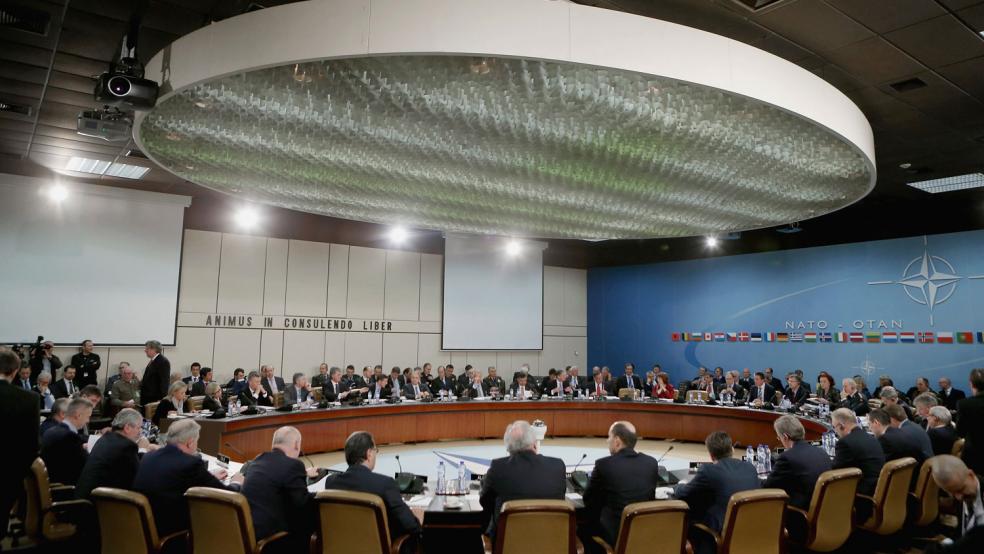As Russia opened a new front in its incursion into Ukraine on Wednesday, sending artillery, infantry and troops across the border near a town called Novoazovsk, NATO Secretary General Anders Fogh Rasmussen outlined a broad new strategy to keep Russia in check.
Speaking to six European newspapers, Rasmussen said the alliance would send troops to new bases in Europe for the first time. He also said these bases would be well stocked so that a multinational quick-strike force could respond to any crises in Eastern Europe. Lastly, the alliance would supply Ukraine with the resources to modernize its military.
Related: What a Deal Between Ukraine and Russia Could Look Like
“We will adopt what we call a readiness action plan with the aim [of being] able to act swiftly in this completely new security environment in Europe,” Rasmussen said. “We have something already called the NATO response force, whose purpose is to be able to be deployed rapidly if needed. Now it’s our intention to develop what I would call a spearhead within that response force at very, very high readiness.”
He continued, “To be able to provide such rapid reinforcements, you also need some reception facilities in host nations. So it will involve the pre-positioning of supplies, of equipment, preparation of infrastructure, bases, headquarters. The bottom line is you will in the future see a more visible NATO presence in the east.”
In theory, this is a sound plan. It would bolster Ukraine, while creating a fighting force that would serve as a visible deterrent to Russian President Vladimir Putin, who has openly eyed NATO members like Estonia and Latvia.
Related: Putin Wants Eastern Ukraine. Let Him Have It
In practice, though, the plan isn’t likely to work, for two reasons. The first is economic. Right now, only three countries - the United States, the UK and Greece - meet the alliance’s 2 percent of GDP on defense requirement.
This isn’t going to change soon, barring some catastrophe that would reverse years of defense budget cuts across Europe. And without more investment in defense, it will be difficult to make a dramatic change in the way NATO does business. For instance, in June, German lawmakers passed a budget that shrinks defense spending there from $43.8 billion last year to $42.8 billion this year.
This reduction - made during the height of the Ukraine crisis - has prompted U.S. Defense Secretary Chuck Hagel to implore Europeans to increase their defense spending. “Over the long term, current spending trends threaten NATO’s integrity and capabilities,” Hagel said in June.
The other reason Rasmussen’s vision would be difficult to fulfill is that there is no desire from Germany to confront Putin militarily. On a number of occasions, German Chancellor Angela Merkel has said Putin should be checked economically, not with shows of force.
Related: Why Germany and Poland Are Winners in the Ukraine Crisis
“The economic sanctions that the Europeans have put in place are already pretty ‘forceful.’ And they can get even stronger,” said Joerg Wolf, editor-in-chief of the Berlin-based think tank Atlantic-community.org.
Dan Hamilton, director of the Center for Transatlantic Relations at Johns Hopkins SAIS, said that Germany’s unwillingness to move ahead with military options gives the rest of Europe cover. “Germany is the key for as far as the alliance will go,” he said. “A lot of countries hide behind Germany. Italy and others aren’t going to take the leadership role.”
Top Reads from The Fiscal Times:





